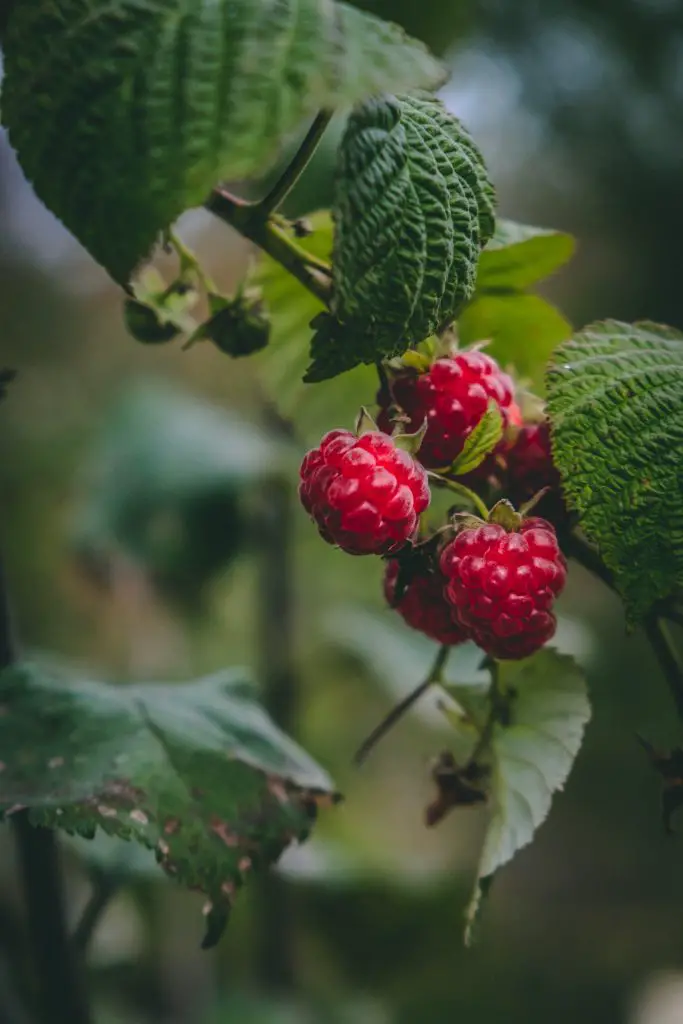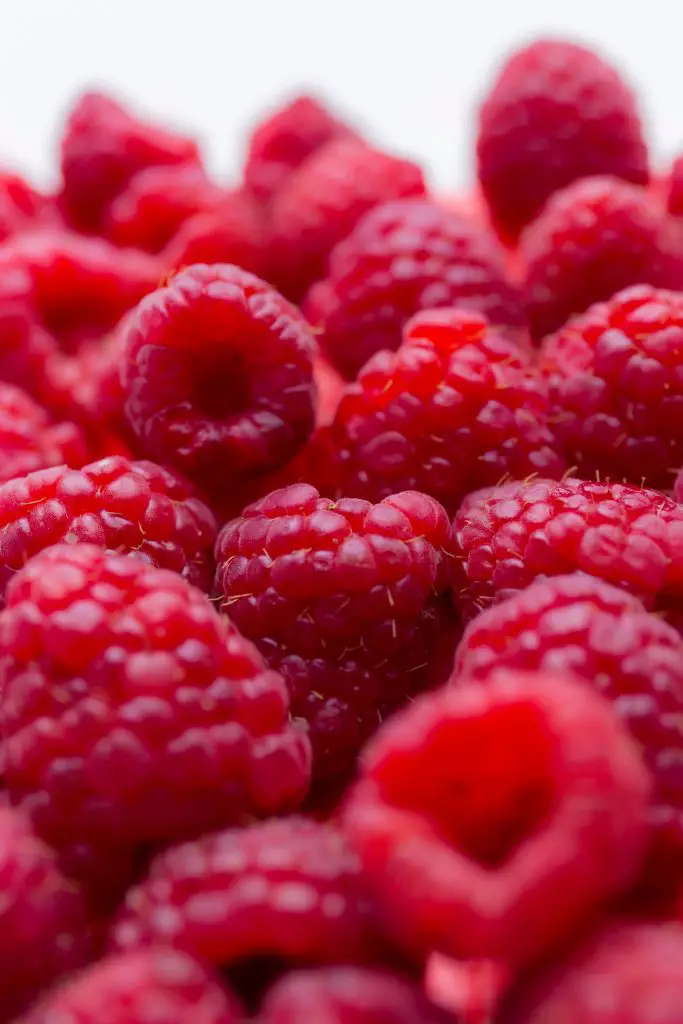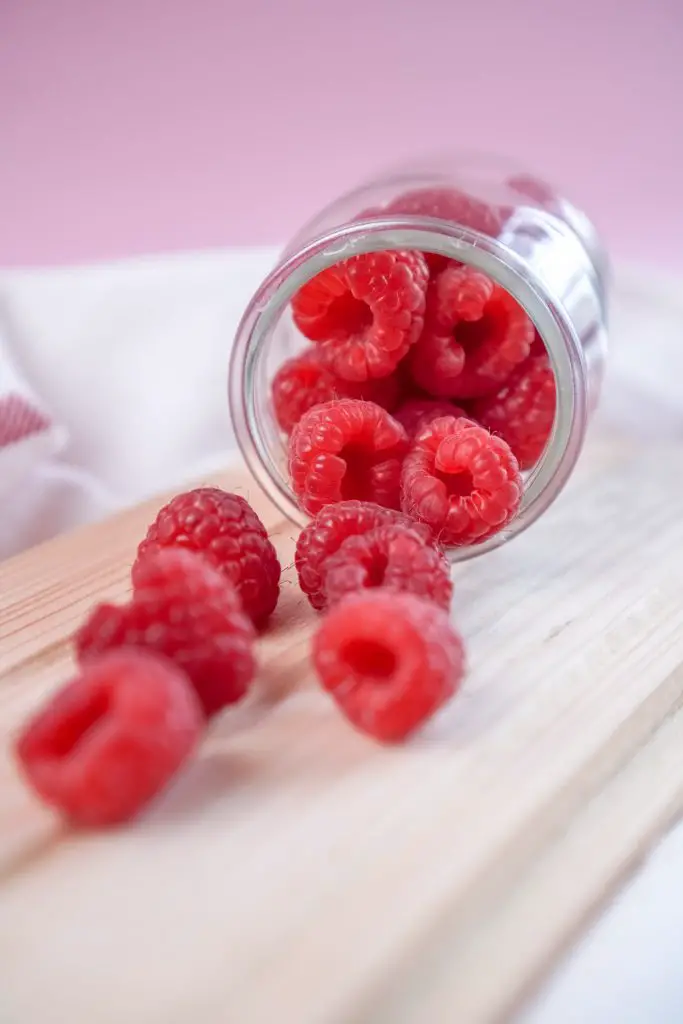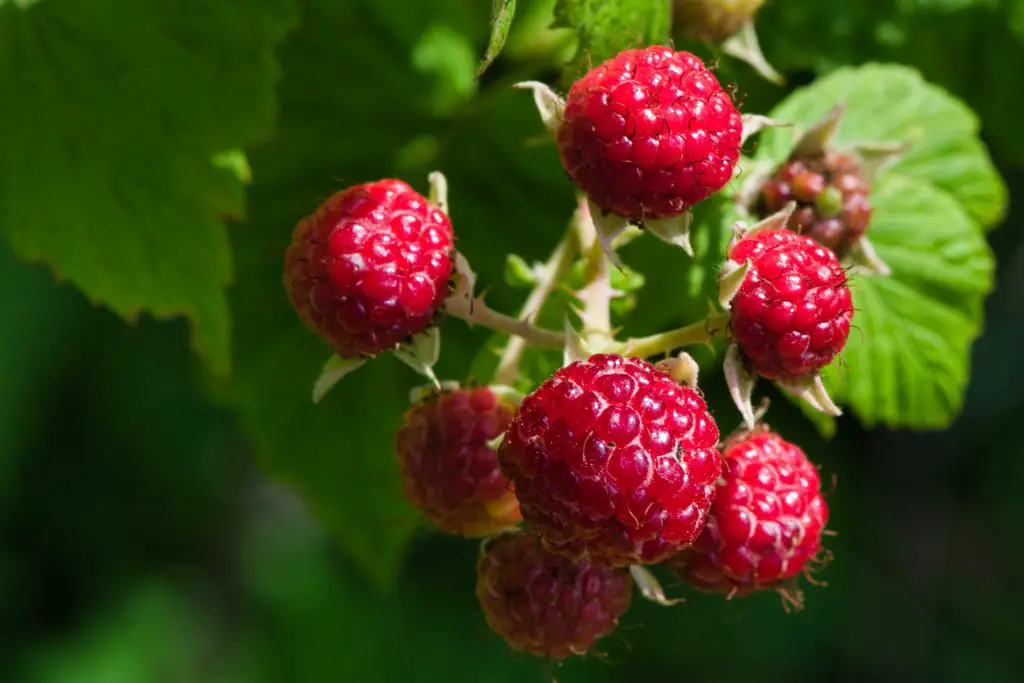How Tall Do Raspberries Grow? Raspberries are an extremely popular soft fruit that is widely eaten around the world. However, due to the labour-intensive nature of picking the fruit, it is among one of the most expensive fruits to purchase at home which is why many gardeners opt to grow this plant at home. However, one of the most common questions that is asked is how tall do raspberries grow?
Autumn fruiting raspberry plants will produce canes that are typically 4 to 6 ft tall depending upon the specific variety. But, if you are growing a summer fruiting variety the canes that are produced can reach up to 20 feet long. However, they are not strong enough to remain upright on their own as a result of this they require a support structure to make them easy to pick.
Autumn fruiting varieties are the easier plants to grow compared to summer fruit varieties because they require significantly less maintenance and also have the added advantage that the fruiting season can be extended by manipulating the growth of the plant.

The growth of the plant can be manipulated by the way that the plant is pruned. The traditional approach to pruning autumn fruit varieties is to cut them to the ground at the end of the season which results in them needing to produce a new cane the following year before fruit production can commence.
However, it is possible to get the plants to fruit earlier by leaving them unpruned which means that there is already an existing cane present that is ready to produce the fruit. This results in the production of fruit earlier in the season typically in late summer.
So to get two flushes of fruit from the same variety many gardeners prune half of the strawberry plants to the ground and leave the remaining half upright.
How Do You Tell The Difference Between Summer And Autumn Fruiting Varieties?
The primary difference between summer fruiting and autumn fruiting varieties is the age of the cane on which the plant fruits. Autumn fruiting varieties will produce fruit on this year’s Canes whereas summer fruit varieties will produce fruit on the previous year’s canes.
Additionally, the other distinctive feature of summer fruiting varieties which was mentioned above is that they produce very long Canes which are typically up to 20 feet long.

As a result of the length of the canes, it is necessary to create a significant support structure to allow the canes to be tied up to avoid them becoming a tangled mess. Typically the support structures should be at least 6 to 7 ft tall and consist of a solid trellis or mesh of some kind.
Ideally, things like temporary fence panels or reo mesh panels are ideal for this because they are cheap and long-lasting and also extremely easy to erect.
What Are The Advantages Of Summer Fruiting Raspberry Canes?
The main advantage of summer fruiting raspberry canes is that they generally produce more berries per plant than autumn fruiting varieties and they also can produce them earlier than the autumn fruiting varieties.
Typically summer fruiting varieties will produce around 10 lbs of fruit whereas autumn fruiting varieties will typically produce around 5 lbs. However, the size of the yield will vary depending upon the specific variety. To read more about which varieties are the highest yielding click on the link here.
How To Care For Summer Fruiting Raspberries
As mentioned above summer fruiting raspberries do take a little bit more effort to look after than autumn fruiting varieties because of the length of the canes and also the specific pruning that must be done.
If you are purchasing a summer fruiting raspberries variety for the first time is advisable to select a sunny location that has rich moist and free-draining soil with plenty of nutrients. If you have some concerns about the quality of the soil it is advisable to add plenty of organic matter to the soil before planting.
Additionally, it is important also to erect the support structure prior to planting as it will be challenging to do so after the plant has become established. Once the plant is in position is important to mulch around the base of the plant and water it well to ensure that it retains a high level of moisture.

During the spring the plant will start to sprout and produce canes that will get progressively longer as the season goes on. It is important at this stage to progressively tie the plants into the support structure. However, due to the length of the canes, it is not practical to keep the canes upright therefore you usually need to tie them in an s-shaped across the surface of the support structure to ensure that they can grow to their full length.
As the plants will produce more than one cane it may be necessary to spread out the positions of the canes to ensure they do not overlap too much. As the plants begin to mature over several years you’ll find that you will have more canes than you need and you will have to start to remove some of them. As a general rule, we recommend having no more than 5 or 6 canes per plant.
In the first year of planting a summer fruit in variety will not produce any fruit because everything on the plant will be first-year canes. In the second year when you reach the point at which the plant is beginning to produce flowers and then berries it is important to keep a close eye on the fruit to ensure that the birds do not get to them before you do.
To ensure this doesn’t happen we recommend netting the plants at this point and time. As the berries begin to change colour they need to be checked weekly and picked as soon as they are ready as they do not last long.

To select the ripe fruits the easiest way is to simply taste the fruit as you pick it because that is the best indicator that the fruit is ready. However, you will quickly find that you can judge the ripeness by the depth of colour of the fruit after a week or two. Generally, the deeper the colour of the fruit the sweeter it will be.
Once the plant has finished fruiting continue to tie the canes in to ensure that the plant is kept neat. At the end of the season in late autumn, it is important to remove those canes that have produced fruit because they will not produce it again. If you are unsure about which canes have produced fruit then the easiest way to tell is to look at the colour of the canes themselves which will typically be looking yellowish and will be starting to die back a little.
Once the pruning is complete it is also advisable to mulch and add fertiliser to ensure that the plant is ready to start growing again in early spring. If you follow these steps consistently you’ll end up with a huge volume of fruit every year.
I hope you found this article useful and have great success growing your raspberries at home. If you have any additional questions or comments please leave them in the section below.
Relevant Articles
Are There Different Types Of Raspberries?
How Many Raspberries Will One Plant Produce?
Blueberries Vs Raspberries: What Is The Difference?
Are Raspberries Deer Resistant? (And How To Protect Them)
Can You Plant Blackberries And Raspberries Together?
